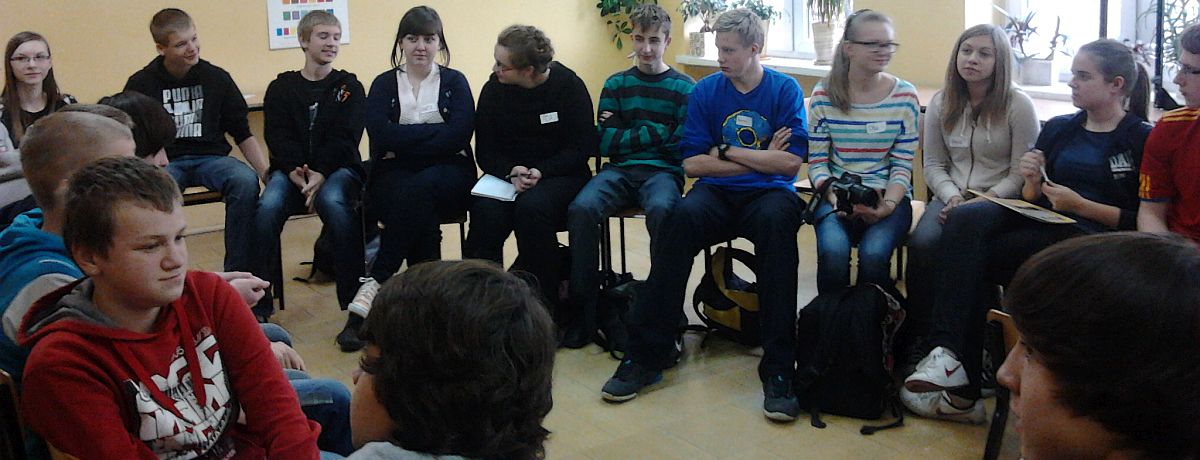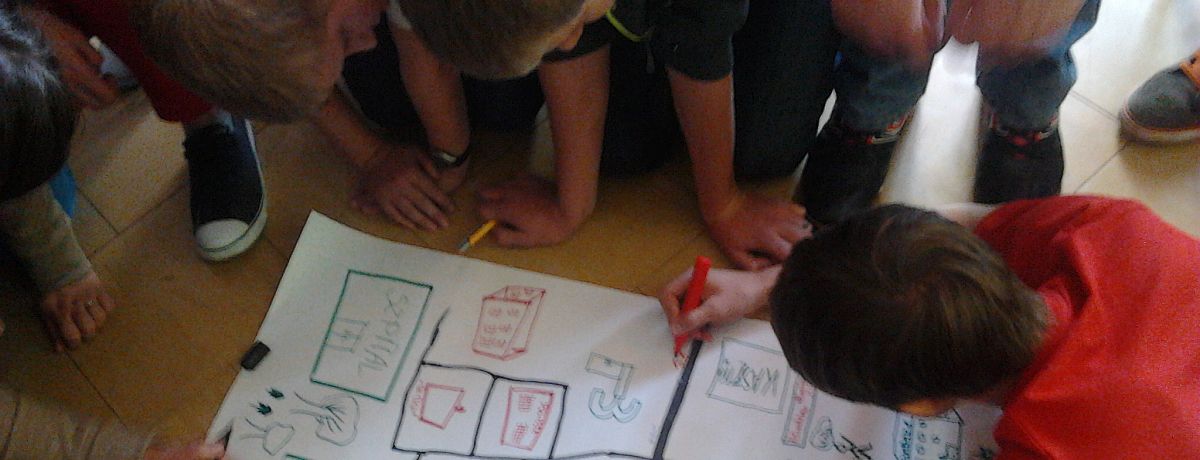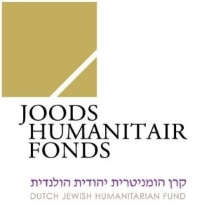| 2018 | 2012 |
Sierpc
Bishop Leon Wetmański Junior High School


| 2018 | 2012 |
Continuing School of Dialogue in 2014
Throughout the workshops, junior high students from Sierpc had to face second-hand stories about Jews, not knowing if they were truth or legend. They had to validate their views and seek information in depths of history on their own. Later, they juxtaposed the town before and now by placing photos side by side to make the difference more visible. In the place of a wooden synagogue with two towers and onion-shaped helmets… an ordinary house now stands. On the opposite side, where a fish market used to be, today there is a gas station. It is easier with the view of Żwirki i Wigury Street, an old wooden house still stands in the former Jewish district. The Jewish community existed in Sierpc from the 18th century, it was then that the Jewish district was established in the left bank of the town, which by the middle of the 19th century counted around 140 houses. There were 3 synagogues, 6 prayer houses and a mikveh. The main synagogue was located in Żwirki and Wigury, at the junction with 11 listopada Street. Before the World War II, numerous Jewish associations and organizations were operating in Sierpc, both commercial and economic, social and religious.
In 1921, Jews constituted 43% of the town’s population. In 1939, the Nazis burnt down the synagogue and started resettlement of the Jewish people to Jabłonna, from where they were to be transported to the General Governorship. Around 500 remaining Jews lived in the ghetto from 1940, which covered the area within the Browarna, Górna and Kilińskiego Streets. On January 6, 1942 the ghetto liquidation began and the Jews were transported to Auschwitz and Treblinka. After the War, only a few Jews returned to Sierpc.
The very fact that over 70 years ago their town was multicultural and to a great extent with the majority of Jews, was not a novelty for the junior high school students from Sierpc. These ambitious young people could also indicate the majority of tangible traces of former residents of Sierpc. Yet during the workshops organized by the School of Dialogue, it turned out that the issues concerning Jewish culture and religion, different to their own, was something they did not know about. They were therefore very curious to participate in the workshops covering these topics.

In addition to cooperation with Forum for Dialogue educators, students were assisted by the Director of The History Documentation Office of the Town of Sierpc, who provided them with precise historic information and gave access to the Book of Memory of the Jewish Community in Sierpc, which proved to be a rich source of information concerning life of Jews in Sierpc.
The walking tour following the footsteps of Jews from Sierpc, to which the junior high school students invited their peers, teachers and town authorities, began with a treat of hallach and plump cake. During the tour, the students used interviews found on the Internet and testimonies of Jews who lived in Sierpc before the war. These stories were really touching. It is worth mentioning that the young tour guides cared to prepare the technical side of the project. They designed elegant invitations, organized sound equipment and prepared a multimedia presentation with interesting photographs. The first stop of the tour included a wooden building of the former Jewish library, one of the few preserved traces of the Jewish presence in Sierpc.
Then, after passing the Sierpienica River, they headed for a former Jewish district where, among other things, a Jewish fish market and Kosher food laws were presented. The Rabbi’s House was also indicated, with relevant stories told. The ghetto for Jews of Sierpc was set up in that area during the war. Only few of them survived, despite the help of their Polish neighbors. Students also talked about that. They explained the dramatic fate of the synagogue in Sierpc, as well as the extraordinary life of one town resident, Leon Gągała, who survived the Holocaust and now lives in Israel and who speaks warmly about his Polish friends.
The last stop of the tour was a visit at the former Jewish cemetery where students presented its older and newer history, talked how school students clean up the holy site and about the memorial for the murdered Jews of Sierpc. The tour participants lit their candles there, being a mutual sign ending the walking tour.
I acquired some new skills when participating in the project implementation. I learnt how to work in a team and collect information from various sources and how to select it. I learnt how to plan my work. Be responsible for a group. I became more systematic and accurate in my work.
Maciek, workshops participant
At the very beginning of the project, I did not know anything about Jews who were residents of our town, and yet they did walk the same streets as I do. Who would have thought that before the war Jews were “a backbone” of commerce in Sierpc, they were craftsmen, and one of them was a doctor who treated my ancestors.
Sebastian, workshops participant

School:
Bishop Leon Wetmański Junior High School
Honorable mention:
Continuing School of Dialogu in 2014
Students:
2nd and 3rd year students
Teachers:
Dorota Ossowska, Paweł Szablewski
Expert:
Tomasz Kurkowski
Educators:
Ewelina Bartosik, Katarzyna Czajkowska
School of Dialogue program in Sierpc was made possible by the support from DORIS HAIMS, HEIDI URICH, DOULAS M. COHEN, ELIAS SAVADA, SUSAN and ROSSA NEISULER, DR. DOROTHY K. LIPSKY and SANDRA K. KRISCH.
Project co-financed from the funds granted by the Dutch Jewish Humanitarian Fund.

In appreciation to Friends of the Forum for supporting the School of Dialogue educational program.
